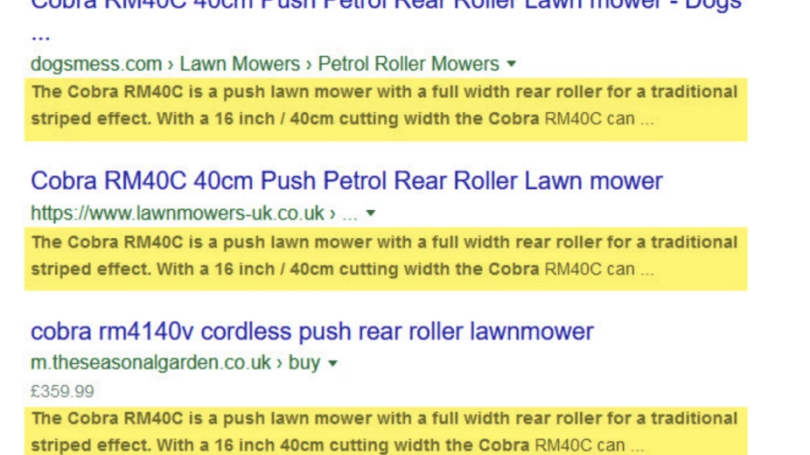All too many affiliate product pages are thin in content and boring. Learn how to up your product description (re)writing game and avoid common mistakes with this guide.
Have you worked hard building your affiliate store but still aren’t seeing the conversion rates you had hoped for? It’s possible that your product pages are completely missing the mark.
If you’re using a merchant’s product feed to create your product pages this is more likely to be true. Here are a couple of issues you will face when importing the manufacturers’ product descriptions straight into your website.
ISSUE 1: THIN CONTENT
The product descriptions merchants provide in their datafeeds are most of the time only a few dozen words or even worse… sometimes a merchant does not provide product descriptions at all. As a result, you end up with product pages thin in content.
Here’s an example of a thin product page only listing a product image, the product name and description, the price, buy now link and links to the other product categories on the site.
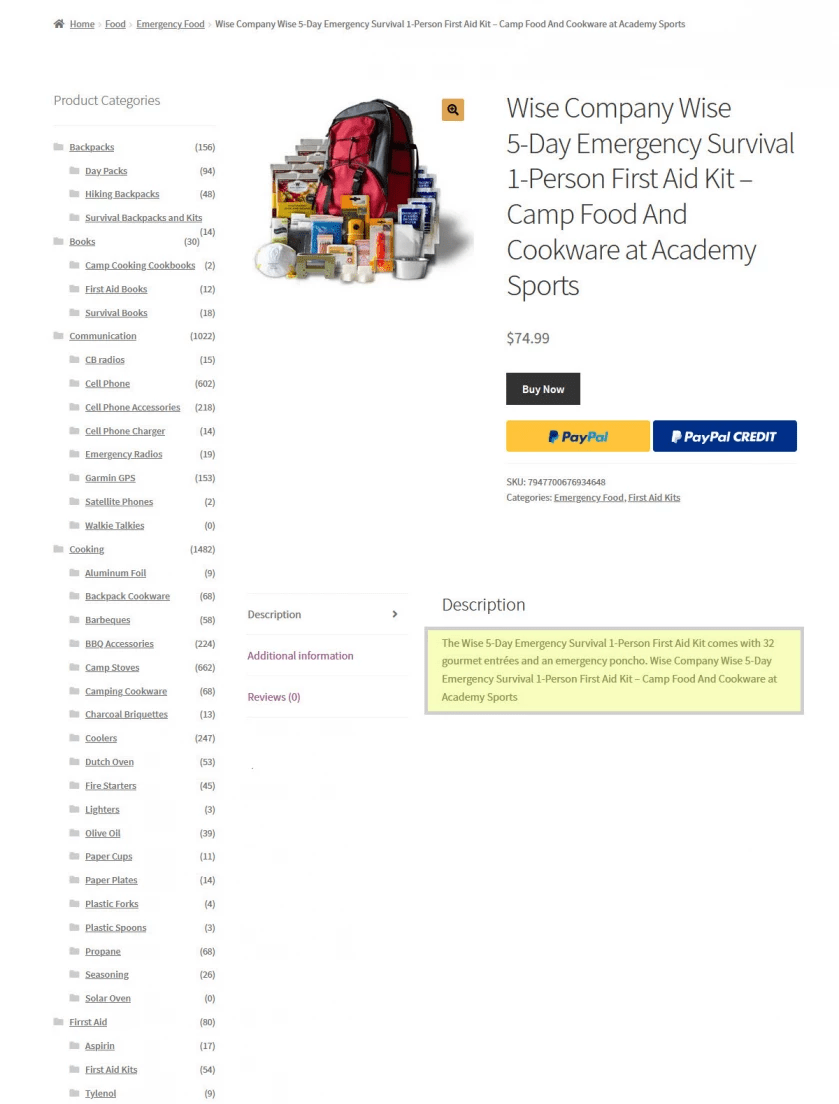
As you can see in the image below (click on it to enlarge the image) the product information comes straight from the merchant’s datafeed. The description hardly counts 36 words! With so less information potential customers will have to know exactly what your product is all about from the start or guess based on the picture.

If you’re going to sell your visitors on the products you’re promoting, try to provide plenty of details. They should never have questions about what a product is or how it works. The more information you can provide, the more confident they’ll feel and the less likely it will be they will search for more information elsewhere.
If you explain what the product is, how the product works, what makes this product special and why your visitors need it in their lives you’ll make it clear for any potential customer who comes across your site, increasing the chance that they’ll click the Buy Now button.
When we look at this SEO-wise… by having too many of such thin, low quality content pages on your site you will be dragging down the overall “quality score” of your site. And you run the risk that your site gets devalued by Google’s core algorithm.
But even if your site isn’t negatively affected by Google’s core algorithm, it can still be hit by a manual Google penalty. If a human reviewer at Google finds that your site is not following Google’s webmaster quality guidelines, a manual action may be applied to your site(partial or site-wide). As long as your site has a manual action against it, some or all of your pages will be devalued in Google’s search results until you fix the issue(s). When it involves a thin content penalty the manual action may look like this in your Google Search Console.
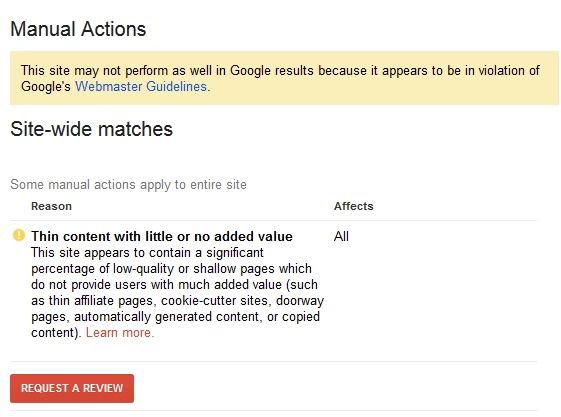
ISSUE 2: DUPLICATE CONTENT
Another issue you will face when using a merchant’s datafeed is that you’re not the only affiliate who is using the datafeed. It’s likely other affiliates are using the same datafeed on their sites too. That means the same product descriptions will end up on multiple websites. Let’s take a look at another thin product page example.
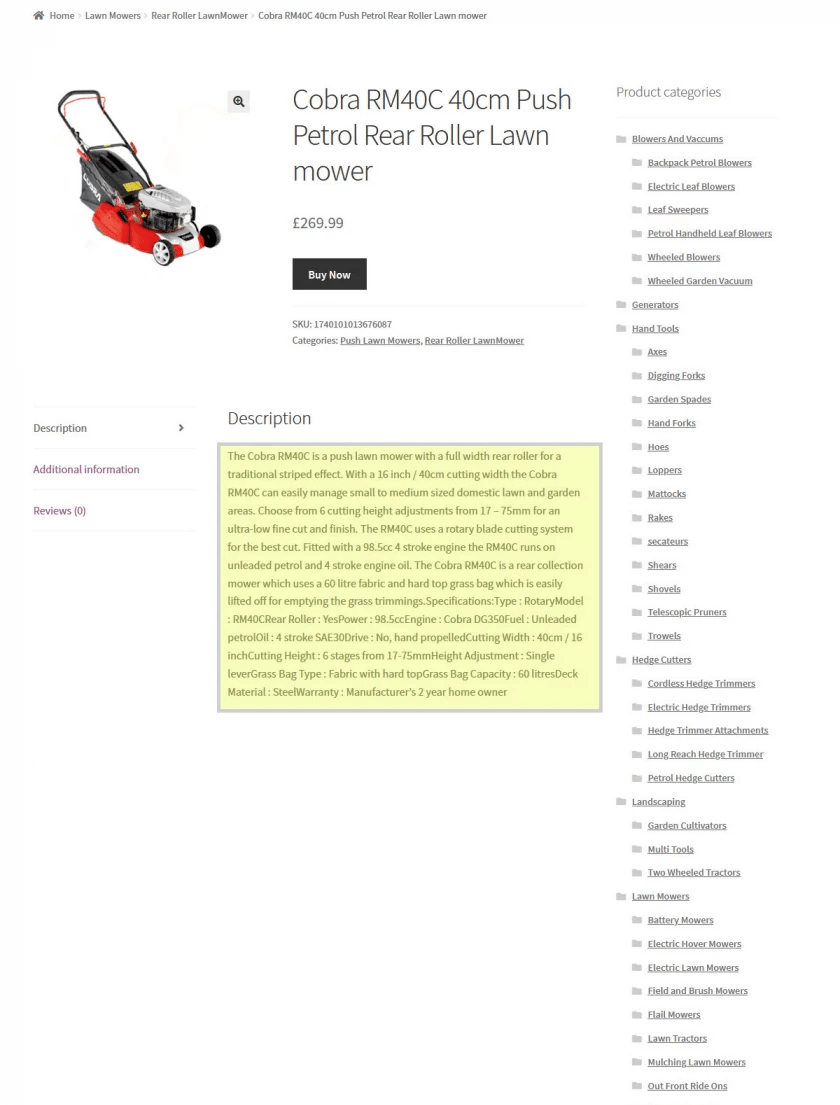
Also in this example the product information comes straight from the merchant’s datafeed – click on the image below to enlarge it.

When copying and pasting the first 2 sentences of the product description into Google you’ll see that about 20 sites are all using the same product description.
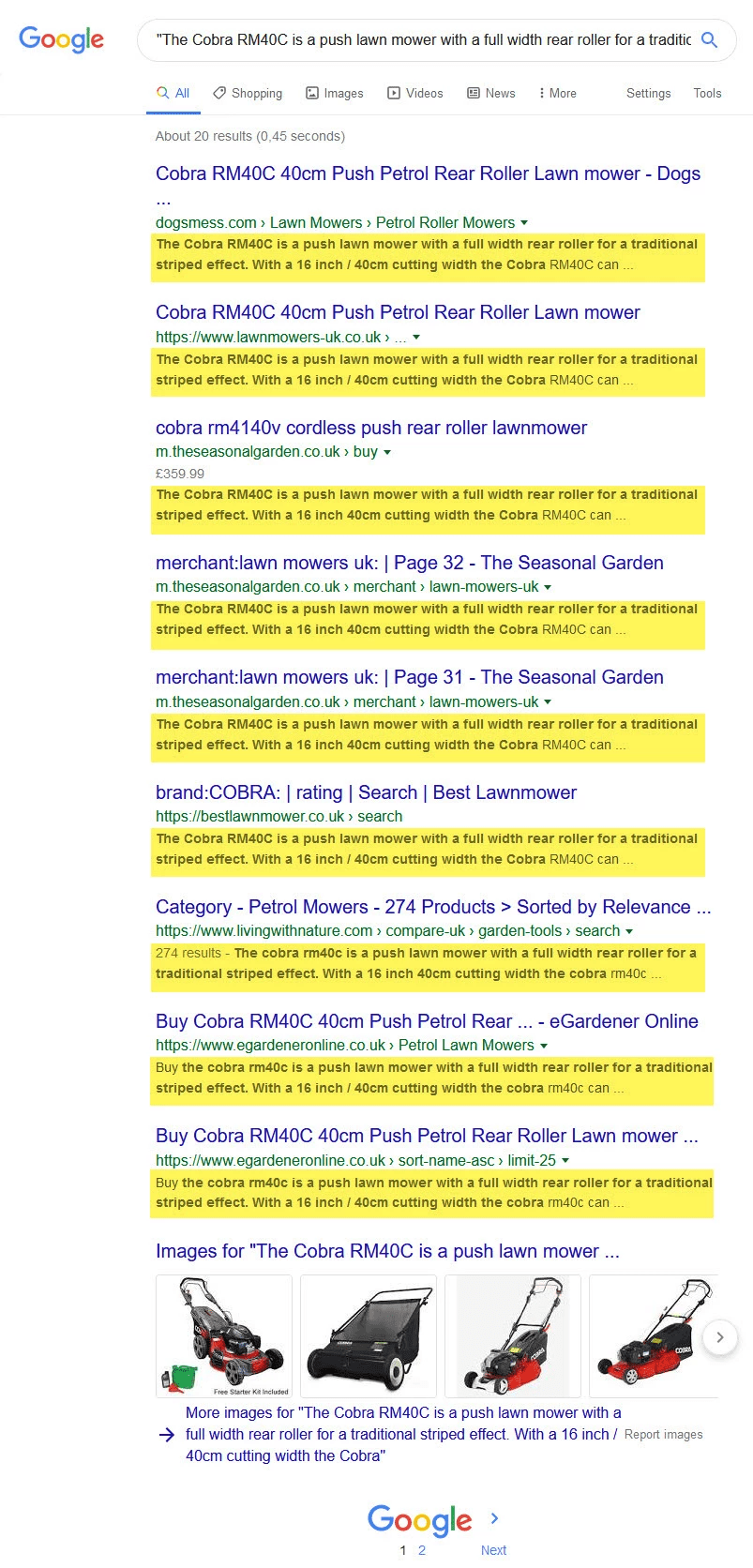
As you know, the key to running a successful affiliate business is to make your site stand out against the competition. If your product descriptions are identical to your competitors’, potential customers will have no reason to choose you over them. In addition when potential customers realize they’ve read the same content elsewhere, that experience can reduce their trust in your site and likeliness that they’ll visit your site again in the future.
When we look at this SEO-wise… to avoid a bad user experience search engines don’t want their users to land on the same content over and over again. If there are multiple pages with the same content across different domains, Google will simply decide which page they want to show to their users for a given search query and which ones to ignore.
Simply put: if your site has the same copy as dozens or hundreds of other affiliate sites, there’s no reason why Google would choose your page over all the other pages with the same copy for a given search query. But when you go the extra mile by writing unique, rich and full product descriptions, you don’t force Google and other search engines to choose between multiple pages with the same content.
ISSUE 3: BORING BOILERPLATE COPY
Finally manufacturers’ product descriptions in datafeeds are most of the time boring boilerplate copy rather than engaging, useful copy designed to connect with potential customers.
Your product copy should be rich and interesting. Visitors to your website have a very short attention span, and your job is to make sure they stay focused on your product for long enough so they click the buy now button. To do this, you need to capture their emotions, not just their logic.
The goal is to draw visitors in and make them feel like they’ll have a happy, simple life if only they buy this product. You can’t make false claims, of course, but don’t be afraid to get colorful.
Good product descriptions should use lots of adjectives and attention-grabbing words. If you’re describing a cooking pot, saying it’s a stainless steel pot with heat-resistant handles won’t convince anyone to part with their money over it. But describing in loving detail how this pot distributes heat evenly over a surface so that you can get a perfect saute every time will catch the attention of kitchen enthusiasts.
GOOGLE WEBMASTER GUIDELINES
In the Webmaster Guidelines for Affiliate SitesGoogle explains exactly how the above issues may negatively affect your rankings. The guidelines clearly state that thin and duplicate affiliate pages
- can suffer in Google’s search rankings
- are highly unlikely to perform well in Google search results
- may be negatively perceived by search engines
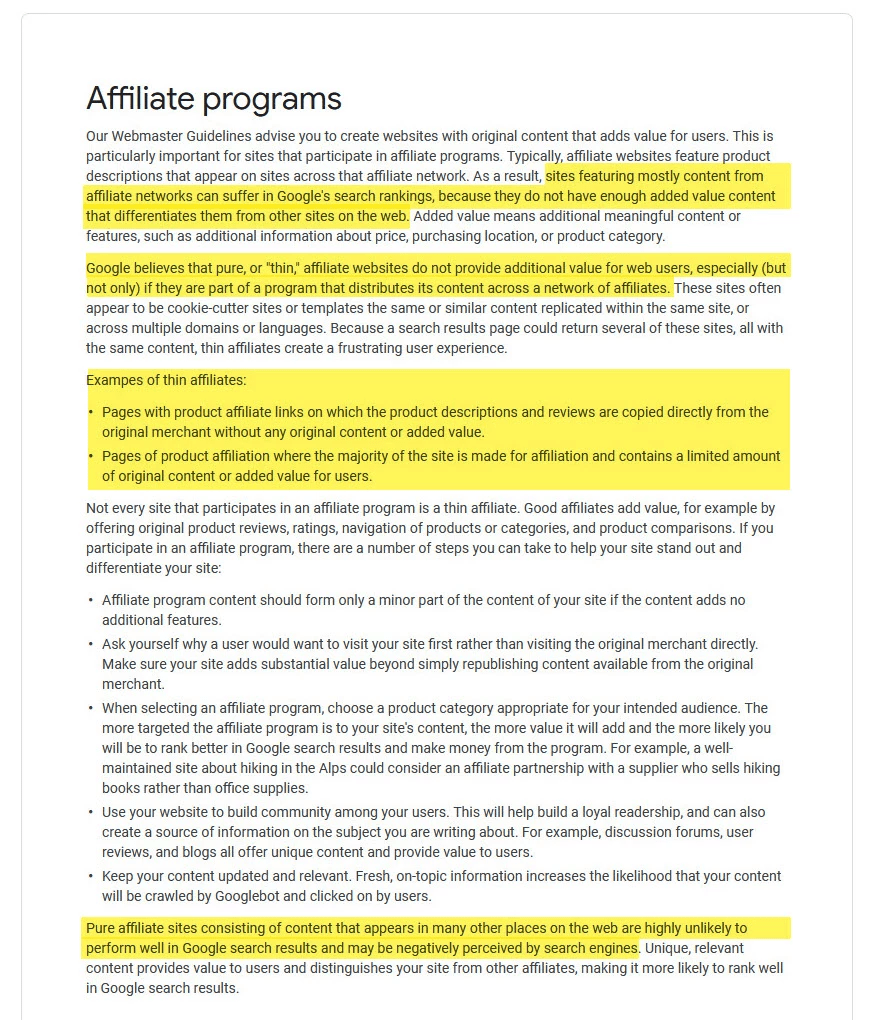
The good news, however, is that Google also tells you exactly what to do to make your site stand out to distinguish you from other affiliates who are promoting the same products. The guidelines clearly state to
- create websites with original content that adds value for users
- make sure you add substantial value beyond simply republishing content from the original merchant
- keep your content updated, relevant, fresh and on-topic
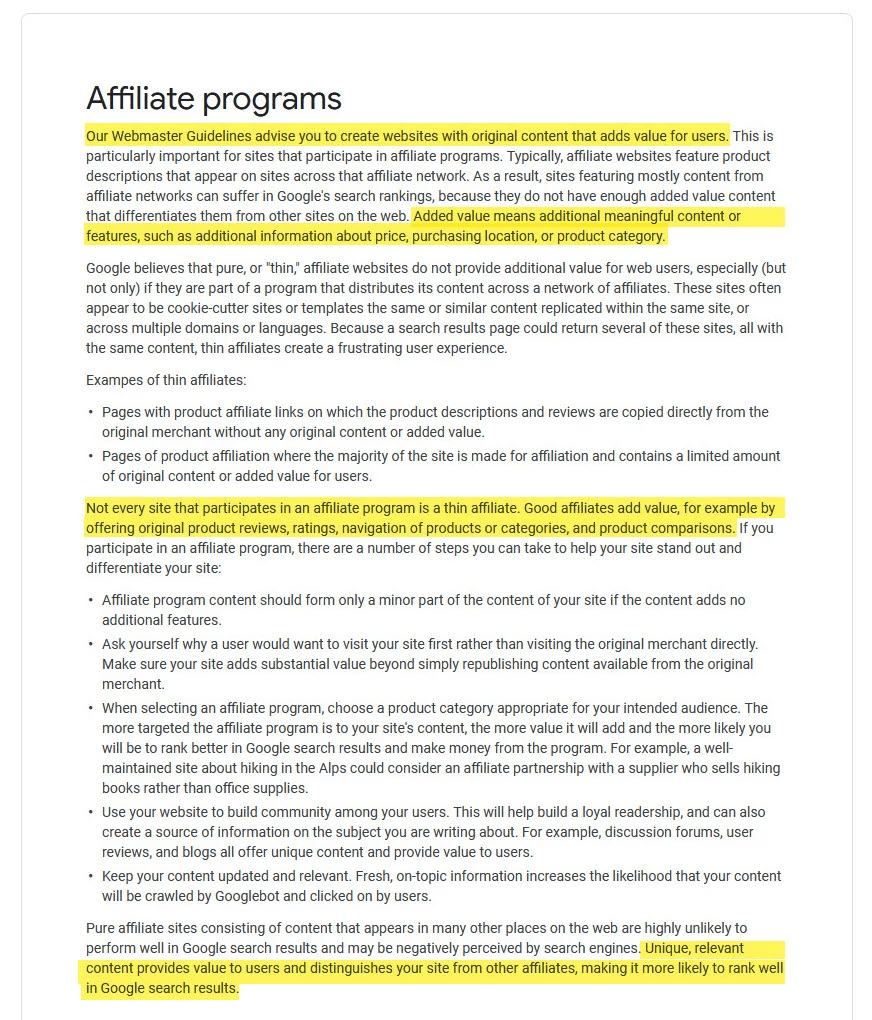
If you want to avoid the above issues and comply with Google’s guidelines here’s how to up your product pages for both potential customers and search engines.
1. KEYWORD RESEARCH
When (re)writing your product pages add some keywords (and variations) that you know your customers are searching for. Some simple keyword research can help you get lots of ideas for keywords to use in your product page. Keyword research can also help you get ideas for features you may want to include in your content.
Let’s say, for instance, that you’re wanting to sell light bulbs. You may discover that people are searching for “incandescent light bulbs”, “energy-efficient bulbs” and “recyclable bulbs”. Include in your product description that your light bulbs meet both those requirements, increasing your product’s appeal.
Be careful not to stuff too many keywords into your product page to try to get a higher search ranking. Search engine algorithms may knock you down for that. Always write for your visitors not for search engines.
2. WRITE ENGAGING, USEFUL PRODUCT DESCRIPTIONS
The first step to creating engaging, useful product descriptions is to write a good hook. You want to capture your potential customers’ attention right away, so start with something that will get them excited. There’s a big difference between “Buy a new Buick today,” and “Are you ready to start the engine on your next adventure?”
You should also try to connect with the customer as much as possible. People like hearing about themselves, and they’re more likely to buy your product if they can see themselves using it.
So talk about your customers’ experience using your product, not just what makes your company great. Paint a picture of how they will feel using your product and how it will improve their life. If you’d like a good example of this kind of appeal, take a look at car commercials; they focus almost to a fault on the experience of driving the car rather than the concrete details.
You also want to make sure you stick the landing. Anyone who works in sales will know the first and last sentences of your pitch are what will sell your product. Sum up what your customers stand to gain by buying your product, and give them a specific call to action to follow.
3. MAKE IT VISUALLY APPEALING
While you’re writing these engaging descriptions, you want to make sure you don’t turn off your customers with the appearance of your page. Large walls of text are intimidating, and no one wants to dive into them. Think about how much easier it is to tackle reading a Twitter feed than it is a New York Times article.
Keep your paragraphs short and well-spaced on your description page. Try to limit paragraphs to three sentences or less, with a nice mix of one- and two-sentence paragraphs in there. This will make it easier for your customers to keep reading through your copy and make it to the pitch at the end.
You should also try to keep your content as readable as possible. On average, you want to aim for a ninth-grade reading level so you don’t overwhelm your audience with a lot of technical jargon. Sticking to simple, clear descriptions will keep potential customers from getting frustrated and leaving your page.
Some Examples
Let’s take the product description from our first example again. We upgraded the decription from 36 words to about 300+ words trying to solve problem 1: thin content, problem 2: duplicate content and problem 3: boring boilerplate copy.
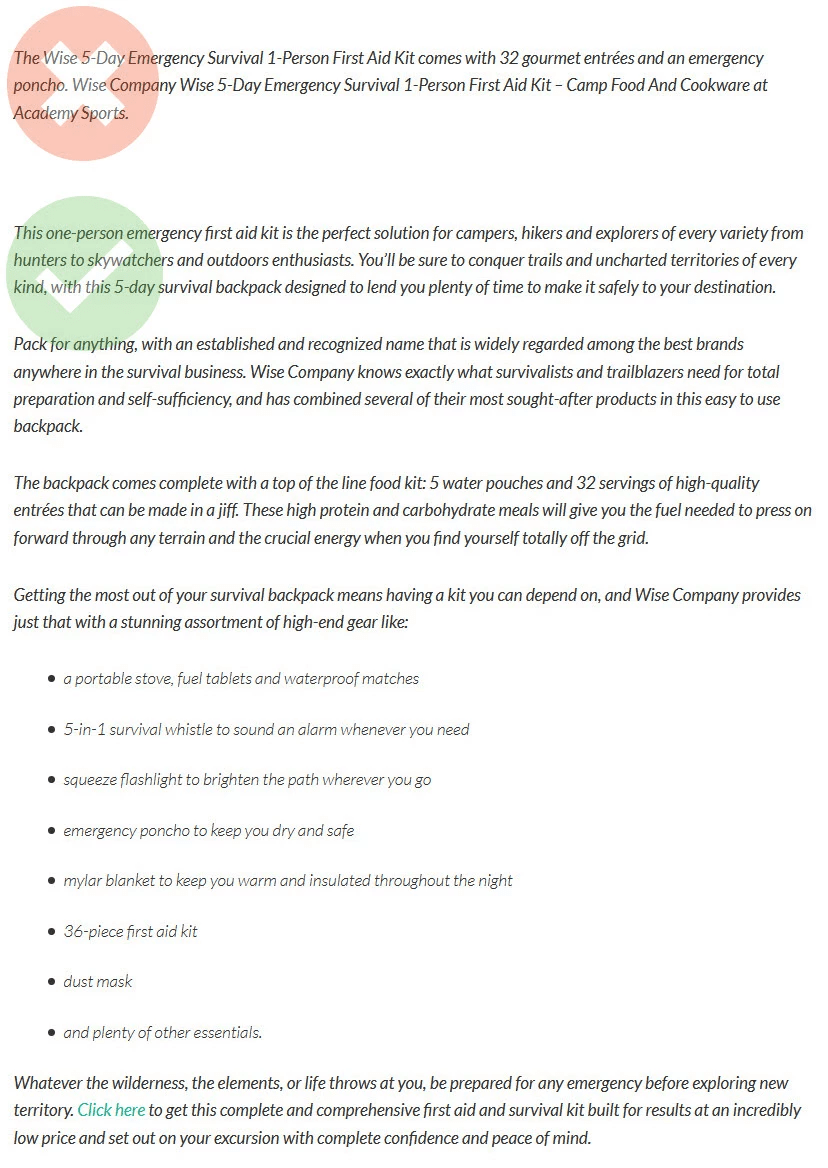
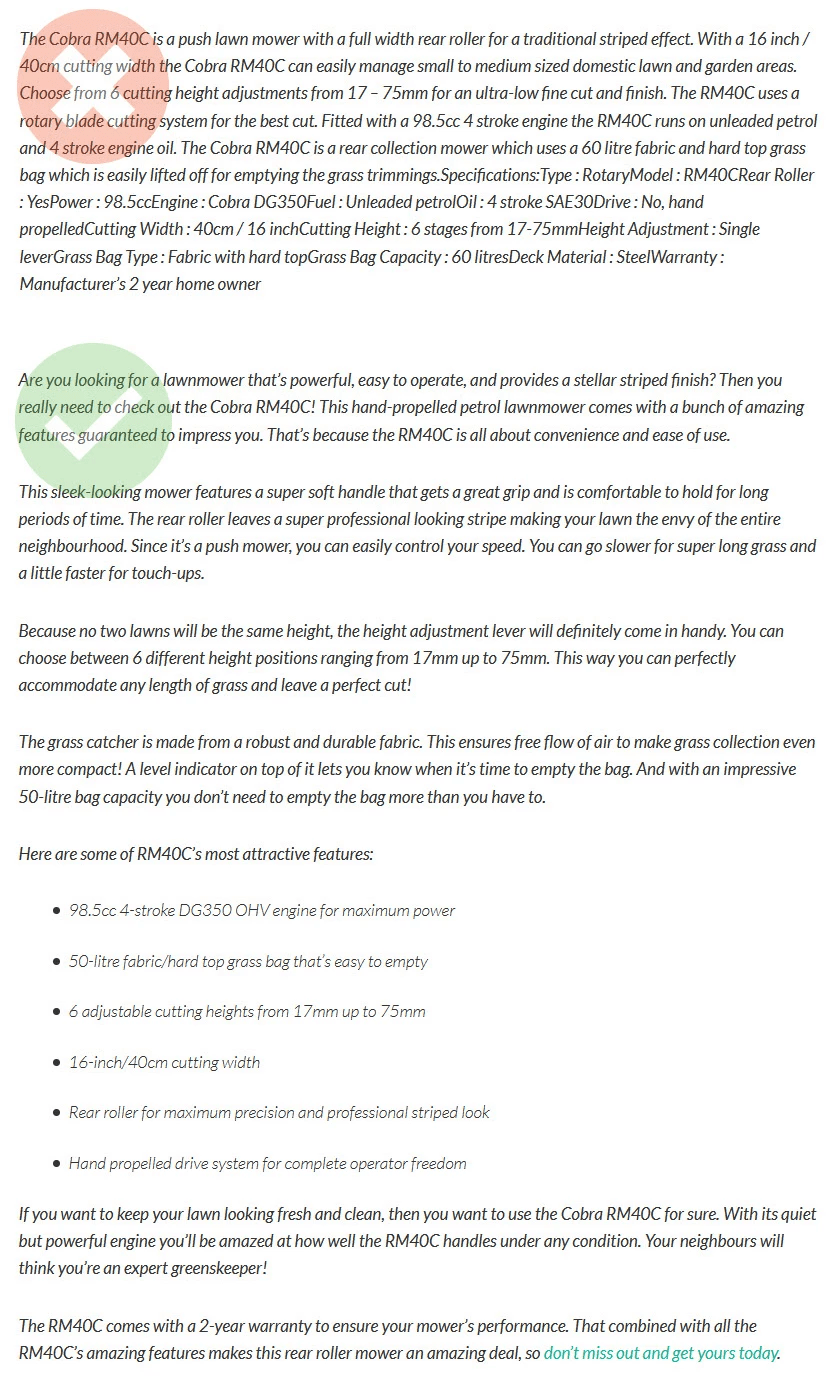
How Datafeedr Can Help
Honing your product description writing skills can increase your traffic and sales conversions. It will put you ahead of the majority of affiliates who are promoting the same products as you. Keep in mind that you won’t become an expert overnight. Learning to write great product descriptions that connect with your specific customer base will take time and practice.
You can do it all yourself or you can let us do all the hard work for you. There’s no shame in bringing in a pro. We’ve teamed up with some excellent writers who can definitely help to create engaging product descriptions for the products you’re promoting on your site. We would love to help you create a world-class affiliate store optimized for SEO today. If you’re interested in this service don’t hesitate to contact us today to learn more.
